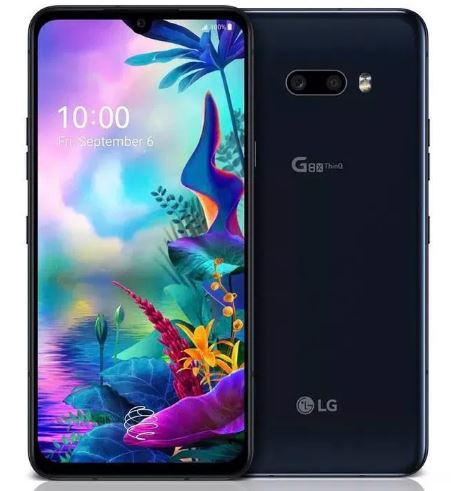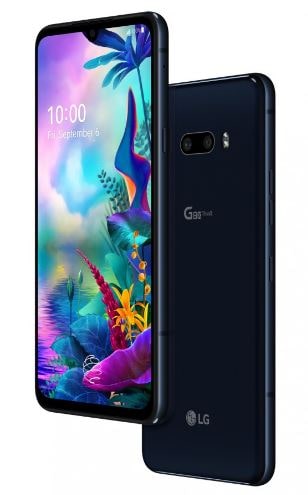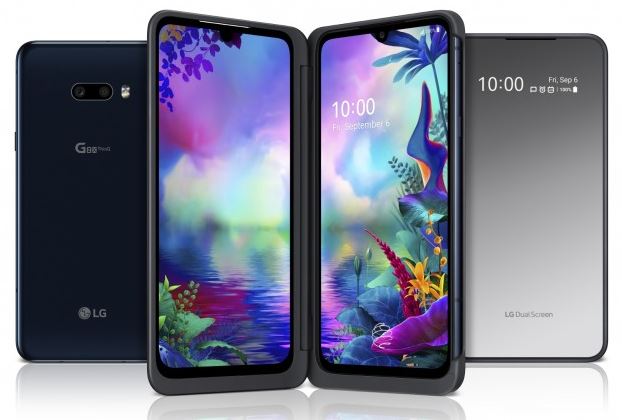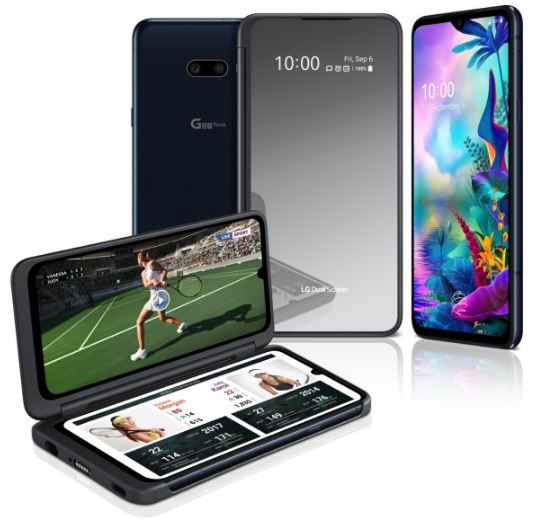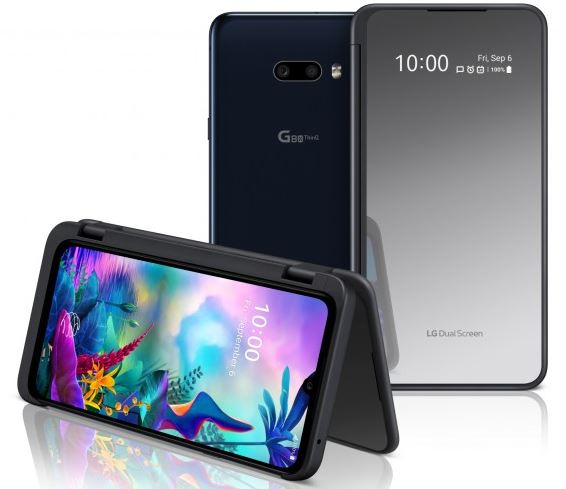It’s basically an updated version of earlier released LG G8 ThinQ with a folding design, a massive 6.4-inches display as well as other mind-boggling specifications you wouldn’t find anywhere else. Folding design doesn’t really mean it’s a foldable smartphone – instead, LG G8X ThinQ is backed by separate twin display – joining each other at a hip by a hinge. What else does it bring along? Let’s find everything else in our LG G8X ThinQ Review below!
LG G8X ThinQ Release Date and Pricing:
We are currently running short on words on in terms of LG G8X ThinQ release date UK. Some online sources, however, rumoured that it’s most likely to hit shelves somewhere in November or December 2019, in short, before 2019 ends. Very much like its release date, LG G8X ThinQ Price UK is also unknown, but it’ll have a lot of resemblance to the like of LG V50 ThinQ. Therefore, expecting a similar price tag for LG G8X ThinQ wouldn’t be wrong. Again, nothing is official, and everything mentioned here is entirely based on online sources.
LG G8X ThinQ Specifications:
LG G8X ThinQ Design:
There is little distinction between LG G8X ThinQ and its predecessor when it comes to its design. However, there are a number of unique variations. Firstly, LG decreased the notch size considerably at the top of the screen by allowing for extra icons to be freed up and usually a more pleasant aesthetic appearance.
On the back of the phone, there is no fingerprint scanner – so the all-glass back panel is no longer interrupted. LG has switched the digit reader to the front of the screen to allow the rear to remain uninterrupted. The body of a phone is flushed by even double cameras and flashes. It looks and feels high quality and is comparatively well in its hand. However, it doesn’t feel as comfortable as Samsung Galaxy S10 Plus -thanks to its rounded edges that don’t allow it to nestle.
LG G8X ThinQ DualScreen:
A more effective dual-screen display is the most apparent upgrade of G8X ThinQ over LG V50. This clip-on screen appeared to be an attempt by LG to get Samsung and Huawei’s foldable opponents onto the market quickly, and this second-generation unit deals with many of the problems with its predecessor. The front of the phone is dominated by a 6.4-inches OLED display with an aspect ratio of 19.5:9. It indicates that it’s equipped with a lower resolution as compared to LG V50 and LG G8 ThinQ. The good news, however, is that it’s exceptionally bright and take your enjoyment to the next level and you won’t notice any issues related to its quality.
Here, though, the true appeal is that the G8 ThinQ can be matched to the LG Dual Screen cover — which immediately doubles your screen image. Actually, the screen counts up to 3 with your screen cover because the screen has a small 2.1″ dot matrix on its front that enables you to see different notifications, i.e. timing, date and caller ID when it’s closed. This is indeed an exquisite addition, although the super reflective LG mirrored finish gave the cover a slightly weak display which obviously means it’s, under the direct sunlight, not easy to read.
LG G8X ThinQ Lag-free Gaming and Multitasking:
The G8X ThinQ is the company’s first and foremost smartphone with gamma settings that make darker screens quite bright and shiny when playing games or working on multiple apps. The phone is equipped with quite a few gaming features as well. It is convenient to hold the G8X ThinQ -very much like a 3DS Nintendo is comfortable, and because it can change the viewing angle of your case, it is adaptable. The bottom screen has many configurable buttons that have been mapped to take your gaming to a new level without any need for a developer to add particular support for a dual-screen case. It’s equipped with Snapdragon 855 chipset, and importantly, a physical connection of two screens further cut out any issues with latency and glitch.
One can, moreover, run two apps simultaneously, take screenshots and much more as it’s packed in a bundle of different dual-screen features. The case works with the camera as well, so that the subject can see shot framing on the external display. The second screen turns white to illuminate selfies – the camera app can also stand alongside a new app of your choice. You can even set the second screen to start a certain application when you open it.
What Else?
The LG G8X ThinQ runs on the Android 9.0 Pie operating system out of the box, and Adreno 640 manages its graphical department quite well. A whopping 128GB of onboard memory helps you store loads and loads of files, videos, movies, and songs and 6GB of RAM ensures smooth and silky performance without any glitch. In terms of a camera, a dual-camera configuration with 13MP + 12MP sensors is available on its rear – positioned horizontally whereas 32MP is holding its position on the front to assist you in video calling and selfies. A 4000mAh battery seems to be enough to take you throughout the day, and whenever you run out of battery, 21W fast battery charging is available to help you out.
The Bottom Line:
As it’s not yet arrived on stores officially, therefore, it’s too early to say anything about LG G8X ThinQ. But based on current details, it seems to be a flagship smartphone that is going to give a fierce competition to its rivals. Its dual-screen is one of the fantastic features to entice users, and it does have some fantastic use cases. We are waiting for its official pricing details, and as soon as more information drops, we will have that page updated. Read LG G8X ThinQ Review from TechRadar
